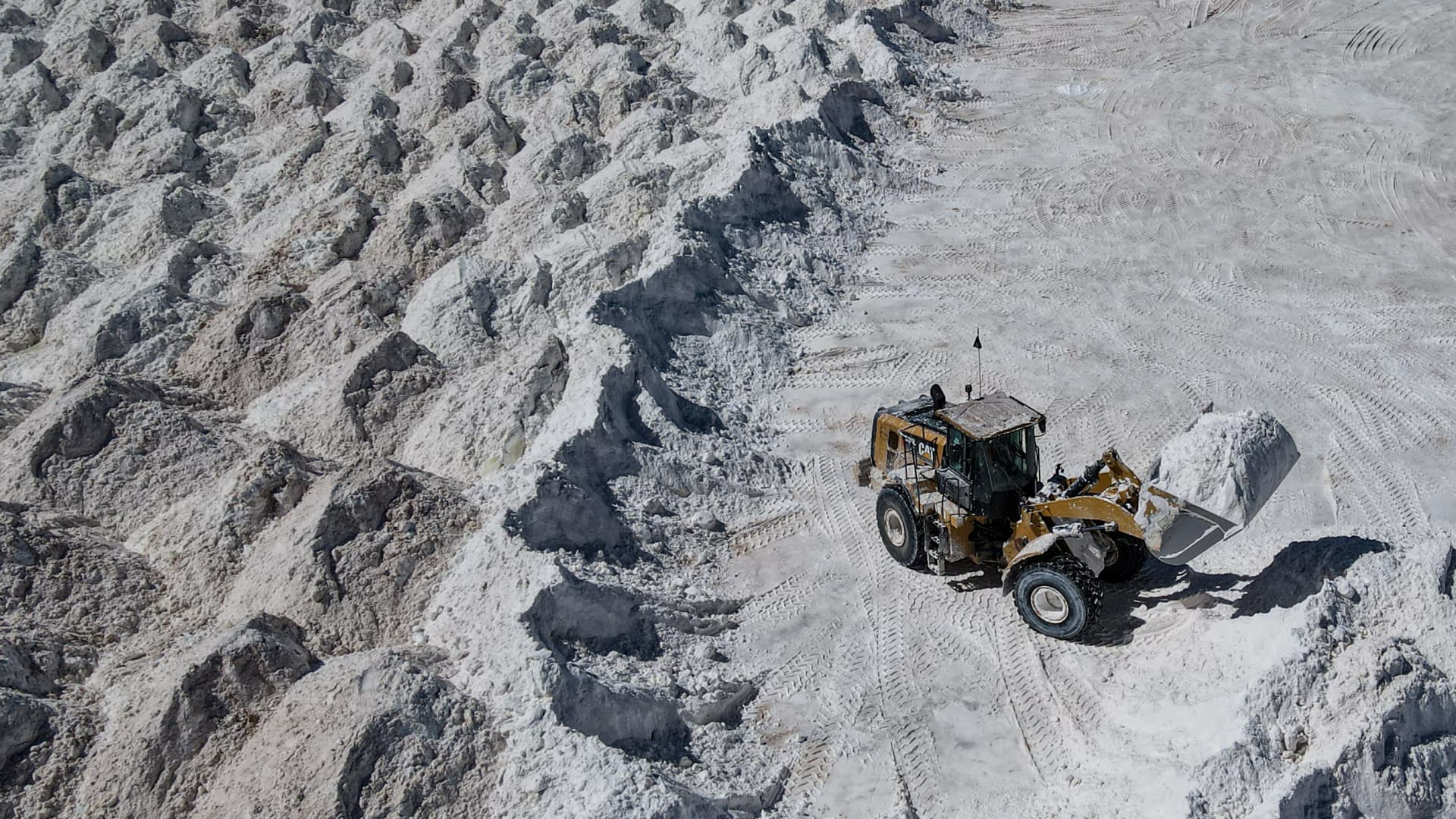Iran says it’s discovered what could be the world’s second-largest lithium deposit

A lithium mining machine moves a salt by-product at the mine in the Atacama Desert in Salar de Atacama, Chile on October 25, 2022.
Lucas Aguayo Araos| Anadolu Agency | Getty Images
Iran says it’s discovered a massive deposit of lithium — a key element in batteries for devices and electric vehicles — in one of its western provinces.
“For the first time in Iran, a lithium reserve has been discovered in Hamedan,” a mountainous province in the country’s west, Mohammad Hadi Ahmadi, an official at Iran’s ministry of industry, mines and trade, was quoted as saying on Iranian state television Saturday.
The ministry believes that the deposit holds 8.5 million tons of lithium, which is often called “white gold” for the rapidly growing electric vehicle industry. If the claimed figure is accurate, that would make the deposit the second-largest known lithium reserve in the world after Chile, which holds 9.2 million metric tons of the metal, according to the U.S. Geological Survey.
The lucrative element is a crucial component in the cathodes of lithium-ion batteries in EVs, as well as in rechargeable batteries like those used in cell phones. The metal’s price has skyrocketed in the last year due to higher demand for electric vehicle parts, global supply chain problems and inflation, but fell more recently, undergoing a correction amid a fall in EV sales and slow business activity in China, the fastest-growing EV market.
Iran’s lithium deposit news, if true, would be a lifeline for the country’s battered economy.
Weighed down by several years of heavy international sanctions and faced with a spiraling currency, which hit its lowest point against the dollar in late February, Iran would benefit greatly from the ability to export such valued resources — though its trading partners would likely be limited due to those sanctions.
Isolated from the global financial system, Iran continues to draw penalties from Western nations that accuse Tehran of supplying Russia with weapons that are being used in its war in Ukraine. Iran’s government has also spent nearly six months cracking down violently on women’s rights and anti-government protesters.
In terms of the global lithium market, such an addition to the world’s known reserves could push prices of the metal down further, depending on Iran’s capacity to export.
Iran is also one of the world’s top producers of oil and gas, but its inability to export widely due to sanctions has slashed its ability to bring in revenue and FX as well as its ability to contribute to global supply.
Analysts at Goldman Sachs see lithium dropping further in price.
“Over the next 9-12 months, we are progressively more constructive on base metals, whilst expecting a move lower in lithium prices alongside cobalt and nickel,” a report from the bank’s commodities research desk from late February wrote.
In the next two years, Goldman expects lithium’s supply to grow on average by a substantial 34% year-on-year, led by Australia and China, which hold some of the world’s largest supplies of the metal.
“Hence, whilst a recovery in EV sales into 23Q2-Q3 could temporarily lift sentiment and support falling battery metal prices, the likely supply surge and downstream overcapacity are set to bring lithium prices down subsequently in the medium term,” the bank wrote.









